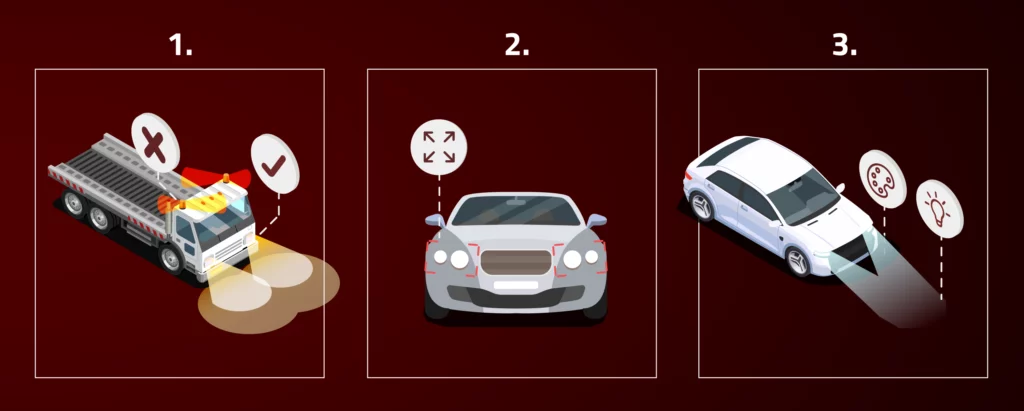ECE R48 is a set of regulations established by the United Nations Economic Commission for Europe (UNECE). These regulations specify requirements for the installation and use of vehicle lighting and light-signaling devices. The aim of these guidelines is to enhance road safety by ensuring that vehicle lighting is correctly positioned and operates optimally. These rules apply in the European Union and other countries that follow the UNECE standards.

ECE R48 sets uniform installation requirements.
ECE R48 sets uniform requirements for the approval of vehicles regarding the installation of lighting and light-signaling devices. The regulations apply to vehicles in categories M (passenger cars), N (trucks), and their trailers (category O), and are regularly updated to comply with the latest safety standards.
Key specifications of the ECE R48 regulation
ECE R48 provides comprehensive guidelines for the installation of vehicle lighting. Some of the key specifications are:
- Positioning of lights: The regulations specify exactly where and at what height the lighting on the vehicle should be installed to ensure it is clearly visible.
- Visibility: Additionally, the regulations require that lighting must be visible from multiple angles, which contributes to better visibility in various traffic situations.
- Light intensity: Furthermore, the standard sets requirements for the minimum and maximum values of light intensity (Lux). This prevents other drivers from being blinded while ensuring sufficient visibility, especially in bad weather.

When manufacturers follow these guidelines, vehicle lighting functions effectively and contributes to overall road safety. For more information on the technical requirements, you can consult the official UNECE page here.
Did you know that vehicle lighting must comply with strict durability requirements according to the ECE regulations? This means the lighting must be resistant to water, dust, and extreme temperatures, which is essential for vehicles operating under harsh conditions.
The relationship between ECE R48 and other ECE regulations
This regulation closely aligns with other ECE regulations, such as:
ECE R149: Focuses on road lighting devices such as headlights.
ECE R148: Contains technical requirements for light signaling devices, such as turn signals and brake lights.
It is crucial for manufacturers and installers to comply with both R48 and these additional regulations to ensure that vehicles meet all safety and functionality requirements.
Frequently asked questions
Is R48 mandatory for all vehicles? Yes, this regulation is mandatory for vehicles in categories M, N, and their trailers (category O) in Europe.
How can I check if my vehicle complies with ECE R48? You can refer to the vehicle documentation or contact the manufacturer for compliance information.
What are the consequences of non-compliance with ECE R48? Non-compliance can result in legal penalties and increased safety risks. It may also hinder access to certain markets, such as the European market.
Following ECE R48 is essential for vehicle safety and compliance with international standards. This helps manufacturers and vehicle owners to produce and operate vehicles that meet the highest safety standards. By adhering to the ECE regulation, they contribute to improved road safety and a reliable driving experience.
Always stay informed about the latest changes in ECE R48 and ensure that your vehicles comply with the most recent regulations.